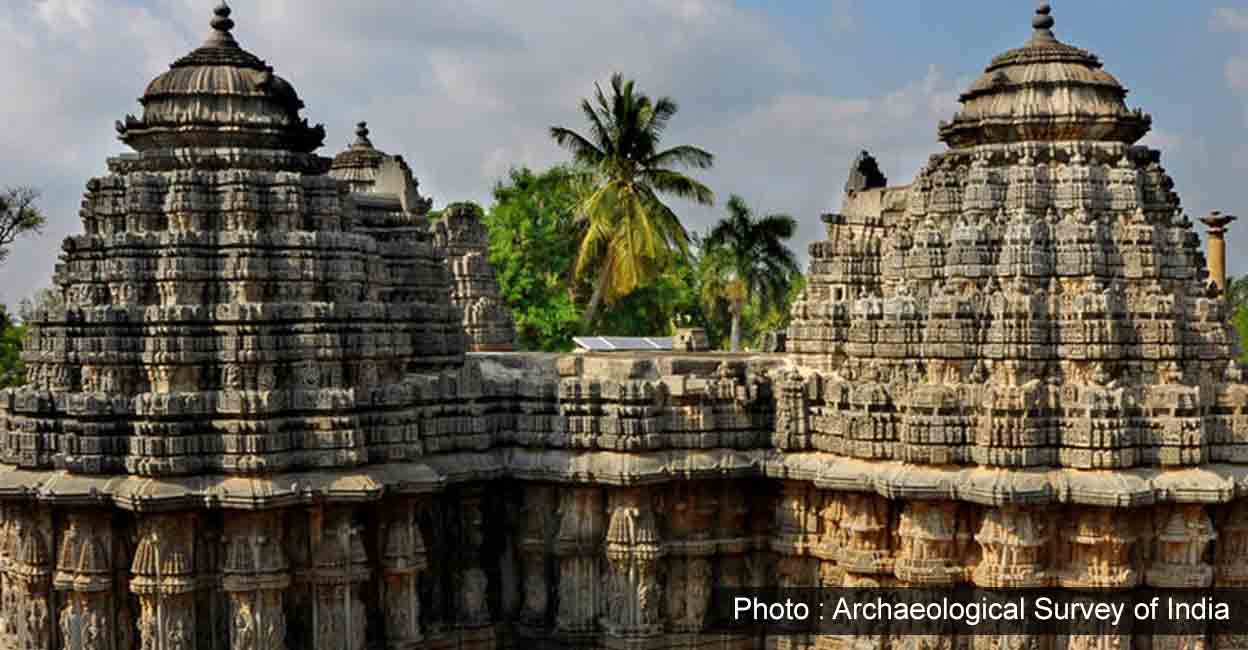- India
- Sep 19
‘Sacred Ensembles of the Hoysalas’ declared UNESCO World Heritage Site
‘Sacred Ensembles of the Hoysalas’, the ancient Hoysala temples of Belur, Halebid and Somnathapura in Karnataka, have been inscribed on the UNESCO World Heritage List.
The decision was taken during the 45th session of the World Heritage Committee currently underway in Riyadh, Saudi Arabia.
This inclusion marks the 42nd UNESCO World Heritage Site in India and comes just a day after Santiniketan also received this distinguished recognition.
Sacred Ensembles of the Hoysalas
• The early Hoysala rulers who established their new kingdom and state fashioned a distinct and novel sacred architecture that set their temples apart from those of contemporary kingdoms and dynasties, even as it drew inspiration from them.
• Sacred Ensembles of Hoysala is a serial nomination of three temples belonging to the Hoysala era from 12th to 13th century, located in Karnataka.
• The three temples are Chennakeshava temple in Belur, the Hoysaleshvara temple in Halebidu and the Keshava temple in Somanathapura.
• Chennakeshava Temple is the main temple in the temple complex in Belur. The complex is located at the center of the traditional settlement which is surrounded by the remnants of a mud fort and a moat. On the southern side, outside the fort area, is a large tank which is culturally linked with the temple.
• Hoysaleshvara Temple is located on the banks of Dorasamudra tank, in Halebidu. The town has many protected and unprotected temples, archaeological ruins and mounds. There are remnants of the fort and gateways that once protected the town.
• Keshava Temple is in the centre of the village of Somanathapura. The temple is enclosed by a multi-celled prakaara. A number of artefacts are displayed in the open ground.
• Hoysala temple plans and forms were the result of adaptations, modifications, and experimentation with features drawn from different temple-building traditions including the Nagara tradition predominant in north India, the Dravida tradition prevalent in south India, the Bhumija tradition of central India and the Karnata Dravida tradition of the Kalyani Chalukyan territories.
• All these three Hoysala temples are already protected monuments of the Archaeological Survey of India (ASI).
• They together represent one of the highest points of human creative genius and stand testimony to the rich historical and cultural heritage of our country.
• Sacred Ensembles of the Hoysalas were on UNESCO’s Tentative list since April 2014.
• India submitted the nomination dossier for Sacred Ensembles of the Hoysalas to the UNESCO World Heritage Centre in January 2022.
• India is currently a member of the World Heritage Committee for its fourth term (2021-25). The matter came up for discussion on September 18, and was adopted without discussion.
Manorama Yearbook app is now available on Google Play Store and iOS App Store

